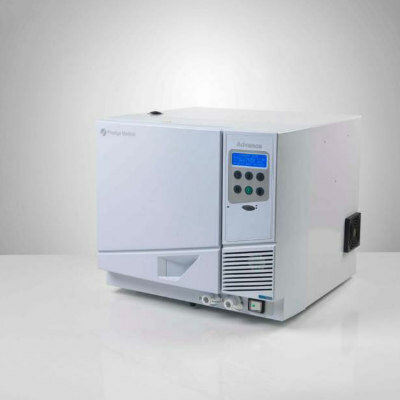Bi-Annual MRI Preferred for Breast Cancer Mutation Carriers
|
By HospiMedica International staff writers Posted on 04 Oct 2018 |

Image: DCE-MRI every six months helps detect invasive breast cancer earlier (Photo courtesy of Fred Pineda/ UCM).
A new study suggests that intensive surveillance of BRCA1 and BRCA2 mutation carriers via magnetic resonance imaging (MRI) twice a year detects invasive breast cancer better that mammograms.
Researchers at the University of São Paolo (USP; Brazil), the University of Washington (UW; Seattle, USA), the University of Chicago Medical Center (UCM; IL, USA), and other institutions conducted a clinical trial involving 295 women (mean age 43.3 years) who had a lifetime risk for breast-cancer higher than 20%. Of these, 53% had one of 11 known genetic abnormalities, including BRCA1 and BRCA2. The study also included women who had been diagnosed with breast cancer or ductal carcinoma in situ (DCIS) before age 35, or had a mother or sister diagnosed with breast cancer before age 50.
All participants underwent a panel of tests for genes associated with a predisposition to breast cancer; after evaluation by a physician and a genetic counselor, they underwent a clinical breast examination and a dynamic contrast-enhanced MRI scan (DCE-MRI) every six months, plus a digital mammogram every 12 months. Those with high-risk mutations who completed five years of the study protocol were offered continued screening. In all, the researchers performed 2,111 DCE-MRIs (on average, about seven for each participant) and 1,223 mammograms (four per participant).
The researchers found a total of 17 cancers, four DCIS and 13 early stage breast cancers, and 15 of them occurred in participants with pathogenic mutations. Eleven involved BRCA1, three involved BRCA2, and one involved epithelial cadherin (CDH1) mutation. Mean tumor size was 0.61 centimeter and all cancers detected during the study were smaller than a centimeter; none had spread to lymph nodes. Patients who developed a cancer were followed continuously for a median of 5.3 years, and all are still alive and free of systemic disease. The study was published on August 28, 2018, in Clinical Cancer Research.
“Mammograms are routinely used to screen for breast cancer, but they are not the best option for about 40% of women. This includes those with dense breasts, as well as those with significant genetic risks,” said study co-author Professor Gregory Karczmar, PhD, of UCM. “MRI is much more sensitive than mammography. It can find invasive breast cancers sooner than mammograms and it can rule out abnormalities that appear suspicious on a mammogram. Unfortunately, MRI is much too expensive for routine screening.”
“My hope is that mammography and MRI will be used in ways that make sense given a woman's personal genetics. Women with mutations in BRCA1 or BRCA2 have very different needs for surveillance for breast disease than women with no mutations in these genes,” said study co-author Professor Mary Claire King, PhD, of UW. “This is particularly true for healthy young women with mutations. It's truly critical to offer intensive surveillance to still-healthy women with BRCA1 or BRCA2 mutations.”
The risk of developing breast and ovarian cancer is greatly increased if a woman inherits the BRCA1 or BRCA2 mutated gene, which produce tumor suppressor proteins. Together, these mutations account for about 20-25% percent of hereditary breast cancers, and about 5-10% of all breast cancers. Several study groups have recommended prophylactic salpingo-oophorectomy for BRCA carriers at age 35 or older to reduce the risk of breast and ovarian cancer.
Related Links:
University of São Paolo
University of Washington
University of Chicago Medical Center
Researchers at the University of São Paolo (USP; Brazil), the University of Washington (UW; Seattle, USA), the University of Chicago Medical Center (UCM; IL, USA), and other institutions conducted a clinical trial involving 295 women (mean age 43.3 years) who had a lifetime risk for breast-cancer higher than 20%. Of these, 53% had one of 11 known genetic abnormalities, including BRCA1 and BRCA2. The study also included women who had been diagnosed with breast cancer or ductal carcinoma in situ (DCIS) before age 35, or had a mother or sister diagnosed with breast cancer before age 50.
All participants underwent a panel of tests for genes associated with a predisposition to breast cancer; after evaluation by a physician and a genetic counselor, they underwent a clinical breast examination and a dynamic contrast-enhanced MRI scan (DCE-MRI) every six months, plus a digital mammogram every 12 months. Those with high-risk mutations who completed five years of the study protocol were offered continued screening. In all, the researchers performed 2,111 DCE-MRIs (on average, about seven for each participant) and 1,223 mammograms (four per participant).
The researchers found a total of 17 cancers, four DCIS and 13 early stage breast cancers, and 15 of them occurred in participants with pathogenic mutations. Eleven involved BRCA1, three involved BRCA2, and one involved epithelial cadherin (CDH1) mutation. Mean tumor size was 0.61 centimeter and all cancers detected during the study were smaller than a centimeter; none had spread to lymph nodes. Patients who developed a cancer were followed continuously for a median of 5.3 years, and all are still alive and free of systemic disease. The study was published on August 28, 2018, in Clinical Cancer Research.
“Mammograms are routinely used to screen for breast cancer, but they are not the best option for about 40% of women. This includes those with dense breasts, as well as those with significant genetic risks,” said study co-author Professor Gregory Karczmar, PhD, of UCM. “MRI is much more sensitive than mammography. It can find invasive breast cancers sooner than mammograms and it can rule out abnormalities that appear suspicious on a mammogram. Unfortunately, MRI is much too expensive for routine screening.”
“My hope is that mammography and MRI will be used in ways that make sense given a woman's personal genetics. Women with mutations in BRCA1 or BRCA2 have very different needs for surveillance for breast disease than women with no mutations in these genes,” said study co-author Professor Mary Claire King, PhD, of UW. “This is particularly true for healthy young women with mutations. It's truly critical to offer intensive surveillance to still-healthy women with BRCA1 or BRCA2 mutations.”
The risk of developing breast and ovarian cancer is greatly increased if a woman inherits the BRCA1 or BRCA2 mutated gene, which produce tumor suppressor proteins. Together, these mutations account for about 20-25% percent of hereditary breast cancers, and about 5-10% of all breast cancers. Several study groups have recommended prophylactic salpingo-oophorectomy for BRCA carriers at age 35 or older to reduce the risk of breast and ovarian cancer.
Related Links:
University of São Paolo
University of Washington
University of Chicago Medical Center
Latest Patient Care News
- Surgical Capacity Optimization Solution Helps Hospitals Boost OR Utilization

- Game-Changing Innovation in Surgical Instrument Sterilization Significantly Improves OR Throughput
- Next Gen ICU Bed to Help Address Complex Critical Care Needs
- Groundbreaking AI-Powered UV-C Disinfection Technology Redefines Infection Control Landscape
- Clean Hospitals Can Reduce Antibiotic Resistance, Save Lives
- Smart Hospital Beds Improve Accuracy of Medical Diagnosis
- New Fast Endoscope Drying System Improves Productivity and Traceability
- World’s First Automated Endoscope Cleaner Fights Antimicrobial Resistance
- Portable High-Capacity Digital Stretcher Scales Provide Precision Weighing for Patients in ER
- Portable Clinical Scale with Remote Indicator Allows for Flexible Patient Weighing Use
- Innovative and Highly Customizable Medical Carts Offer Unlimited Configuration Possibilities
- Biomolecular Wound Healing Film Adheres to Sensitive Tissue and Releases Active Ingredients
- Wearable Health Tech Could Measure Gases Released From Skin to Monitor Metabolic Diseases
- Wearable Cardioverter Defibrillator System Protects Patients at Risk of Sudden Cardiac Arrest
- World's First AI-Ready Infrasound Stethoscope Listens to Bodily Sounds Not Audible to Human Ear
- POC Diagnostic Platform Offers Handheld, Instrument-Free PCR Testing for STIs
Channels
Artificial Intelligence
view channel
AI-Powered Algorithm to Revolutionize Detection of Atrial Fibrillation
Atrial fibrillation (AFib), a condition characterized by an irregular and often rapid heart rate, is linked to increased risks of stroke and heart failure. This is because the irregular heartbeat in AFib... Read more
AI Diagnostic Tool Accurately Detects Valvular Disorders Often Missed by Doctors
Doctors generally use stethoscopes to listen for the characteristic lub-dub sounds made by heart valves opening and closing. They also listen for less prominent sounds that indicate problems with these valves.... Read moreCritical Care
view channel
Deep-Learning Model Predicts Arrhythmia 30 Minutes before Onset
Atrial fibrillation, the most common type of cardiac arrhythmia worldwide, affected approximately 59 million people in 2019. Characterized by an irregular and often rapid heart rate, atrial fibrillation... Read more
Breakthrough Technology Combines Detection and Treatment of Nerve-Related Disorders in Single Procedure
The peripheral nervous system (PNS) serves as the communication network that links the brain and spinal cord to every other part of the body. It consists of two parts: the somatic nervous system, which... Read moreSurgical Techniques
view channel
Hydrogel-Based Miniaturized Electric Generators to Power Biomedical Devices
The development of engineered devices that can harvest and convert the mechanical motion of the human body into electricity is essential for powering bioelectronic devices. This mechanoelectrical energy... Read moreWearable Technology Monitors and Analyzes Surgeons' Posture during Long Surgical Procedures
The physical strain associated with the static postures maintained by neurosurgeons during long operations can lead to fatigue and musculoskeletal problems. An objective assessment of surgical ergonomics... Read more.jpg)
Custom 3D-Printed Orthopedic Implants Transform Joint Replacement Surgery
The evolving field of 3D printing is revolutionizing orthopedics, especially for individuals requiring joint replacement surgeries where traditional implants fail to provide a solution. Although most people... Read more
Cutting-Edge Imaging Platform Detects Residual Breast Cancer Missed During Lumpectomy Surgery
Breast cancer is becoming increasingly common, with statistics indicating that 1 in 8 women will develop the disease in their lifetime. Lumpectomy remains the predominant surgical intervention for treating... Read moreHealth IT
view channel
Machine Learning Model Improves Mortality Risk Prediction for Cardiac Surgery Patients
Machine learning algorithms have been deployed to create predictive models in various medical fields, with some demonstrating improved outcomes compared to their standard-of-care counterparts.... Read more
Strategic Collaboration to Develop and Integrate Generative AI into Healthcare
Top industry experts have underscored the immediate requirement for healthcare systems and hospitals to respond to severe cost and margin pressures. Close to half of U.S. hospitals ended 2022 in the red... Read more
AI-Enabled Operating Rooms Solution Helps Hospitals Maximize Utilization and Unlock Capacity
For healthcare organizations, optimizing operating room (OR) utilization during prime time hours is a complex challenge. Surgeons and clinics face difficulties in finding available slots for booking cases,... Read more
AI Predicts Pancreatic Cancer Three Years before Diagnosis from Patients’ Medical Records
Screening for common cancers like breast, cervix, and prostate cancer relies on relatively simple and highly effective techniques, such as mammograms, Pap smears, and blood tests. These methods have revolutionized... Read morePoint of Care
view channel
Critical Bleeding Management System to Help Hospitals Further Standardize Viscoelastic Testing
Surgical procedures are often accompanied by significant blood loss and the subsequent high likelihood of the need for allogeneic blood transfusions. These transfusions, while critical, are linked to various... Read more
Point of Care HIV Test Enables Early Infection Diagnosis for Infants
Early diagnosis and initiation of treatment are crucial for the survival of infants infected with HIV (human immunodeficiency virus). Without treatment, approximately 50% of infants who acquire HIV during... Read more
Whole Blood Rapid Test Aids Assessment of Concussion at Patient's Bedside
In the United States annually, approximately five million individuals seek emergency department care for traumatic brain injuries (TBIs), yet over half of those suspecting a concussion may never get it checked.... Read more
New Generation Glucose Hospital Meter System Ensures Accurate, Interference-Free and Safe Use
A new generation glucose hospital meter system now comes with several features that make hospital glucose testing easier and more secure while continuing to offer accuracy, freedom from interference, and... Read moreBusiness
view channel
Johnson & Johnson Acquires Cardiovascular Medical Device Company Shockwave Medical
Johnson & Johnson (New Brunswick, N.J., USA) and Shockwave Medical (Santa Clara, CA, USA) have entered into a definitive agreement under which Johnson & Johnson will acquire all of Shockwave’s... Read more
















